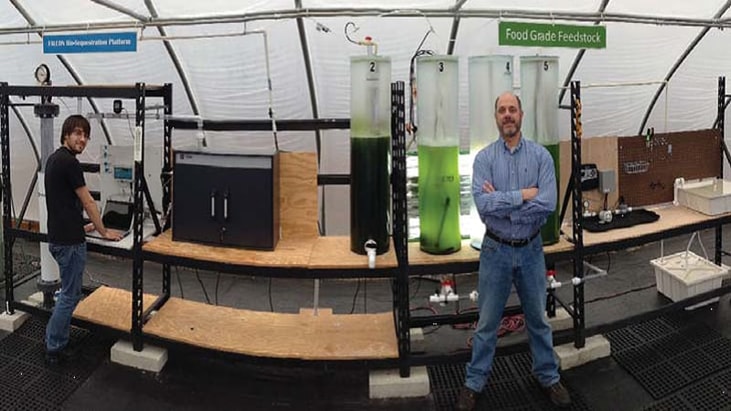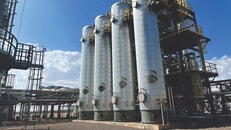Carbon Capture for Food and More
Tucked away in the city of Cranston, Rhode Island, in a 5,200 sq. ft. greenhouse accessible only by gravel road, is Agcore Technologies (agcoretech.com). The company was founded as Tomorrow BioFuels LLC in 2007 by Larry Dressler, President and CEO, who has over 25 years of experience in the oil and agriculture business.
Dressler also has several patents and patents-pending for the technology he’s created for use at the Cranston facility. Within the last few months, the company has transitioned from its old Tomorrow Bio- Fuels moniker to its new Agcore Technologies one.
“Agcore” is actually an acronym for what the company is all about: agriculture, CO2, remediation. In simplistic terms, this means the reuse of waste carbon dioxide, specifically for use in the biofuel, agricultural, and nutraceutical (nutritional supplement) fields. What began simply as an algae farm six years ago to produce product for these three fields has now ventured into the carbon capture business, something Dressler recognizes was not the intent when he first started the company. But after research on carbon capture several years back, combined with the necessity for carbon dioxide as part of the business, Dressler says it was only logical that the company move in that direction.
The Platform
Algae are microorganisms that are able to grow in almost all types of water: fresh, salt, waste, you name it. It can do this because it is a plant that doesn’t need a root system to grow, making algae incredibly unique and versatile. It can also be grown year round using artificial light in almost any environment. As mentioned previously, algae have high value in the agricultural and biofuel business. Specifically, it can be used in feedstock for animals and fish, as well as nutritional supplements for humans. Spirulina, a strand of blue-green algae considered a “superfood” in its dry form, is approximately 65 percent protein, 25 percent carbohydrate, and eight percent vegetable oil according to Dressler, all part of a balanced nutritional intake.
... to continue reading you must be subscribed























